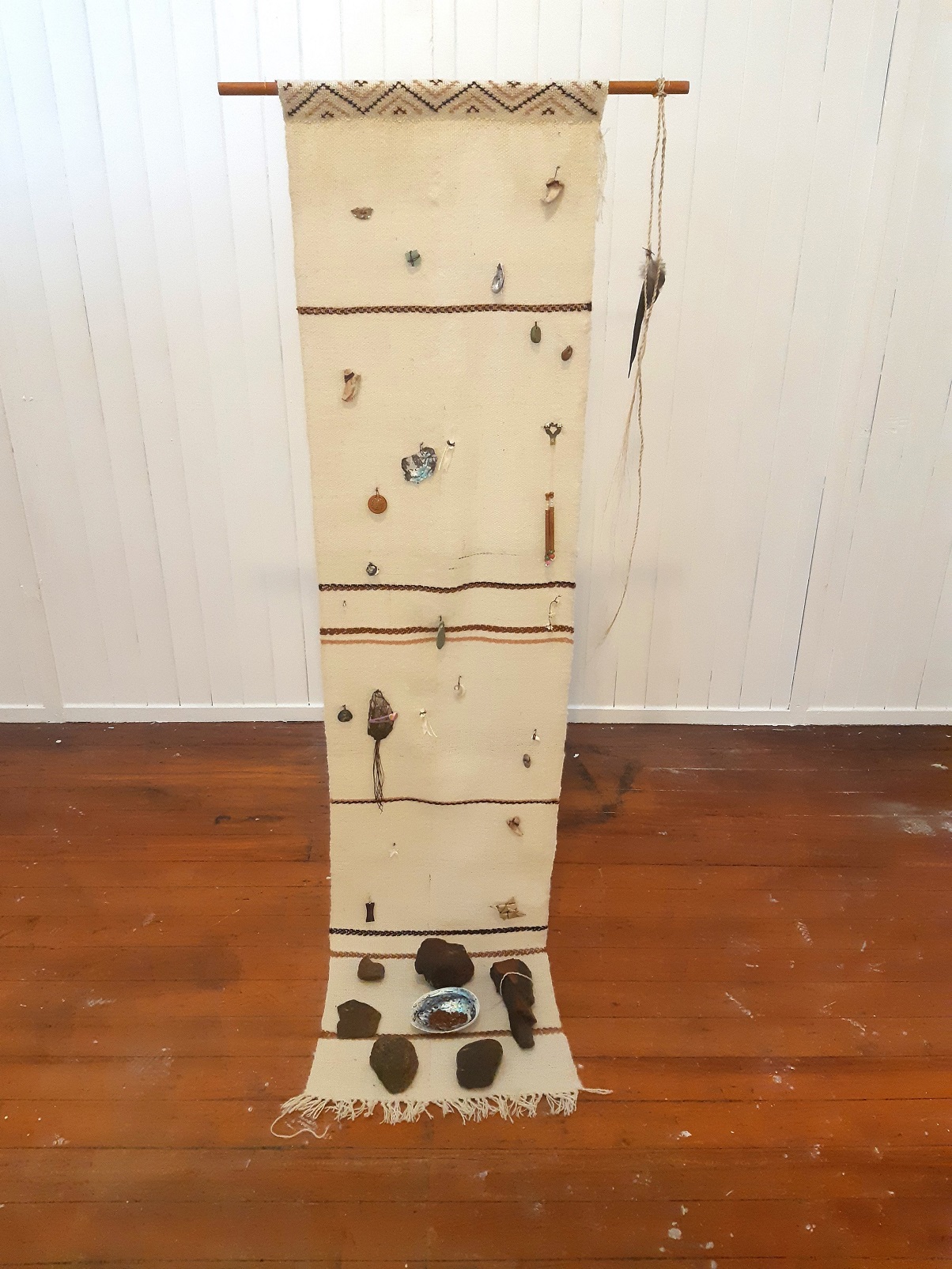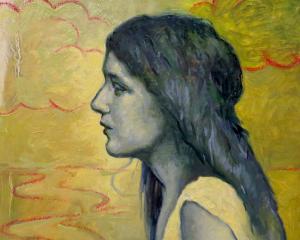![Rozana Lee, "Drawn to see(a)" [Installation view]. Photo: Beth Garey](https://www.odt.co.nz/sites/default/files/story/2024/10/blue_oyster_r_lee.jpg)
(Blue Oyster Art Project Space)
Comprising video, photographic stills and mirrored textile works, "Drawn to see(a)" is a critical reflection on shared environmental concerns associated with different geographical locations.
These include Kettle Park in St Clair, Ōtepoti, a landfill near Bishkek, in Kyrgyzstan and the Aral Sea that crosses Kazakhstan and Uzbekistan.
In 2023, Lee participated in The Zhelezka Project, where a group of artists and researchers travelled through Kazakhstan, Kyrgyzstan, and Uzbekistan on Soviet-era trains, documenting and engaging with local ways of life and travel.
The artist’s consideration of the Aral Sea and Bishkek landfill from this trip are featured places in "Drawn to see(a)" that punctuate the ongoing wicked concerns of human generated waste.
The Aral Sea exemplifies anthropogenic impacts on ecosystem collapse across multiple domains and the open-air landfill near the capital city of Bishkek is a human-made ecological disaster.
Ōtepoti’s Kettle Park is an historical seaside landfill at risk of further erosion and exposure of hazardous industrial waste, for example.
Interested in connections beyond boundaries of location, the sheer and felted textiles in the show contain materials from both represented regions: merino wool from Aotearoa and an Ubek cotton rag, for example.
A reading list of supportive evidence bookmarks the concerns of the show.

(Slant Art Project Space)
Horowai Moemoeā translates as "a waterfall of dreams" or "a dreamy waterfall".
The conceptual source material for this exhibition coalesces at a waterfall the artists Maria Dunn (Kāti Māmoe, Kāti Rakiwhakaputa, Kāi Tahu) and Isaiah Okeroa (Taranaki, Waikato) happened upon one day while exploring the Otago Peninsula and where they gathered whenua to complete the exhibited work.
Falling like a waterfall in the middle of the exhibition is a panel of hand spun wūru/wool.
It is a collaborative piece that is stitched through with meaning in small treasures or trinkets, kōrari (dye from harakeke flower heads) and a paua shell filled with the whenua that was collected on that day the artists spent on the peninsula.
Two additional series of hand spun wūru textiles by Marie Dunn flank this centre work and include a range of needle work pieces inspired by taniko and tukutuku, for example.
The colour range of the kōrari is remarkable in these works, with contrasting deep hues against a lighter pink.
Multidisciplinary and multisensory artist Isaiah Okeroa’s sonic contribution to the exhibition was a musical instrument entitled Pūngāwerewere, named after the spider that had made a home in the hand-made pūtātara (a conch shell trumpet).
![Judy Darragh, "From the Waist Down" [Installation view]. Photo: Wesley Jon Fourie](https://www.odt.co.nz/sites/default/files/story/2024/10/new_lands_exhibition_judy_d.jpg)
(New Lands Gallery and Project Space)
"From the Waist Down" is a succinct excerpt of Judy Darragh’s practice where problematic plastic meets the theoretical play of "plasticity" (see the work of French philosopher Catherine Malabou).
In this iteration, form meets form as found objects generate new bodily objects.
In Lunge (2022-24) plastic objects, such as balls and bowls, are encased in back net stockings.
The objects are suspended in series as the netting stretches around them and extends, at various lengths, to the floor.
For Darragh, the ideas of rigidity and fluidity are the key visual and conceptual elements.
This sense of movement and change is also seen in the work Stiletto (2020) where, according to the artist, the dynamic qualities of high heel shoes, to dance or to totter, become rigid.
From heel to heel and toe to toe, three perfectly symmetrical columns of shoes are installed up and down the wall. They look like pelvis bones or spinal columns.
On the floor is a cardboard box overflowing with used up toilet rolls.
Entitled "Shitverse" (2024), each roll is wrapped in newspaper clippings of images and articles from the New Zealand Herald: a jostling, terrible pile of local and world events.
Accompanying the exhibition are fresh pieces of writing by Wesley Jon Fourie, Pennie Hunt and Sarah McGaughran.
By Joanna Osborne












